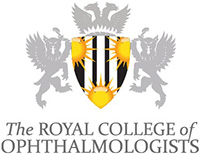Clinical Rating Scale (CRS)
| CRS | Learning Outcome | Target Year (TYA)# | Assessor* | |
| CRS1 | CA1 | Consultation | 1 annual review | Cons, Sen. OST |
| CRS2 | CA2 | Vision | 1 | Cons, Sen. OST, AHP |
| CRS3 | CA3 | Fields | 1 | Cons, Sen. OST |
| CA4 | LO removed | N/A | ||
| CRS5 | CA5 | External eye | 1 | Cons, Sen. OST |
| CRS6 | CA6 | Pupil | 1 | Cons, Sen. OST |
| CRS7 | CA7 | Ocular motility | 2 | Cons, Sen. OST |
| CRS8 | CA8 | IOP | 1 | Cons, Sen. OST, AHP |
| CRS9 | CA9 | Slit lamp | 1 | Cons, Sen. OST |
| CRS10a, CRS10b | CA10 | Fundus | 2 | Cons, Sen. OST |
| CRSret | PS2 | Retinoscopy (Paeds) | 3 | Cons, Sen, Optometrist |
* Assessors:
- Cons: consultant ophthalmologist
- Sen. OST: senior trainee (Year 4, 5, 6, 7)
- AHP: appropriately trained allied health professional (nurse, orthoptist, optometrist)
# Trainees must have at least 2 satisfactory assessments completed by different assessors by the target year in order to proceed with training. It is expected that the majority of the OST1 LOs listed will have been completed well before the end of the first year by most trainees as they are essential for safe clinical practice. Trainees are encouraged to augment their training portfolio by asking for further assessments at later stages in training, particularly whilst gaining experience in sub-specialty clinics. CRS1 must be re-assessed annually. By the end of training a trainee will have at least 14 satisfactory CRS1 forms in their portfolio (2 per year).
